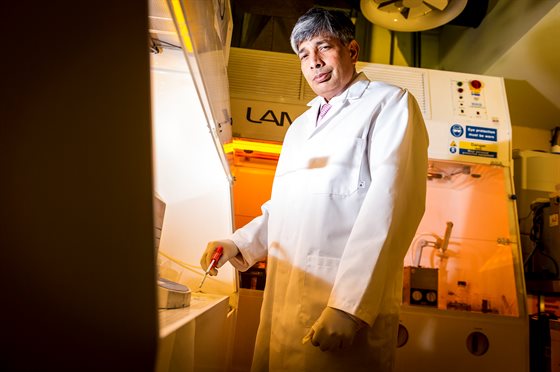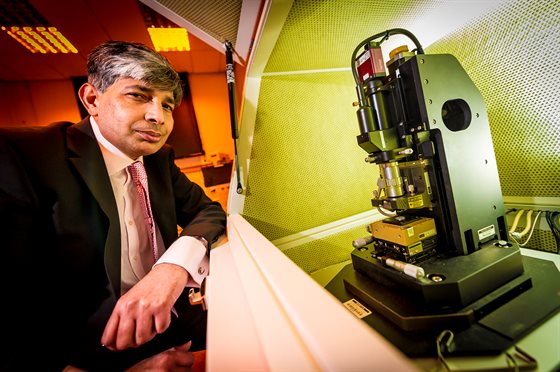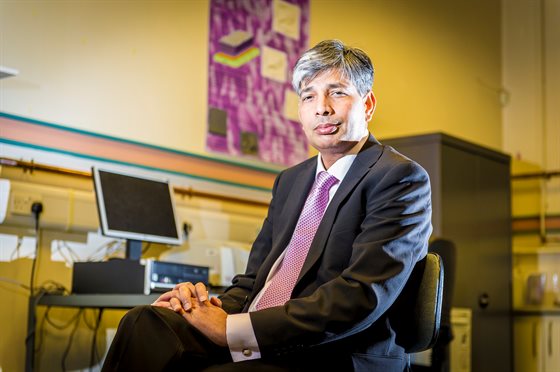They call it magic process in the science labs at De Montfort University (DMU) - and this secret process method developed in the heart of Leicester could revolutionise the way we harness the power of the sun.
If Dr Shashi Paul can transform that magic process of his into an innovative new type of solar cell, the dream double of cheaper, greener electricity could soon follow. Not a bad result for something that currently looks like a small spillage of ordinary table salt on a worktop.

So what is this stuff, precisely? For the moment, at least, Dr Paul, of the Emerging Technologies Research Centre at DMU, is keeping mum.
He’s just landed a £34,000 grant from the government agency Innovate UK to find a way of developing photovoltaic solar cells manufactured at sharply reduced temperatures from the current norm that also boast a greatly improved efficiency the photovoltaic solar cells.
Pay attention, here’s the science bit. The standard solar cells fitted in gadgets and gizmos ranging from garden lights to rooftop panels are made of polycrystalline silicon, and have an efficiency rate of between 20-25%, which means the overwhelming bulk of the sun’s energy is wasted.
Current science holds the theoretical limit – the speculative maximum conversion rate - is no more than 33%.

Dr Paul’s project has one overriding ambition: To blow that figure right out of the water.
Polycrystalline silicon is manufactured in a process which demands temperatures ranging between 600C and 800C
That’s a headache for scientists and manufacturers alike.
“Say you want to put it on glass to form a solar cell. Glass starts bulging over 400C. It doesn’t stay flat. It’s a problem.
“We were looking for a method by which you can make polycrystalline silicon at less than 400C. That will give us the flexibility to deposit it on glass. And if we can really, really lower the manufacturing temperature, we could put it on plastic. It’s much more flexible. And that would really lower the cost.”
Dr Paul has already patented a new process for making polycrystalline silicon at lower temperatures, which was developed and tested in the labs at the Queen’s Building at DMU.
He called it the Ra method, after the Egyptian sun god. “I wanted to call it Konark after the sun temple in India,” he says with a smile, “but unfortunately it was already taken.”
Now his eyes are on the potential applications of his breakthrough.
“The main aim of this project is to produce a workable solar cell. Once we have demonstrated that, even though the efficiency will be only 8% to 10% at first, we are right into the game.
“This may give new face to the technology that’s gone before it.”

The upshot, Dr Paul believes, will be solar technology that’s cheaper to make, and has a reduced carbon footprint.
“This research is very close to my heart,” he says. “I want to make it happen”.
“It would be valuable enough in England, but transfer the technology to the third world, where there are sunny areas with no electricity, and, well, you can see where it comes in.
“I want to see if we can produce these cells at a low cost, manufactured in this country. That’s my personal wish. And it will create a societal benefit anywhere in the world.”
The funding is for a one-year feasibility study, which Dr Paul hopes will lead to long-term research. By September next year, when the initial funding has come to an end, he hopes to be able to hold a viable photovoltaic solar cell in his hand.
And if the method to make it was known as Ra, and that mystery process making crystalline silicon , what would he call the cell? “I’d want to put DMU’s name on it, or Leicester. This would be my gift to the institution I work for and dearly love.”
Posted on Monday 2 January 2017